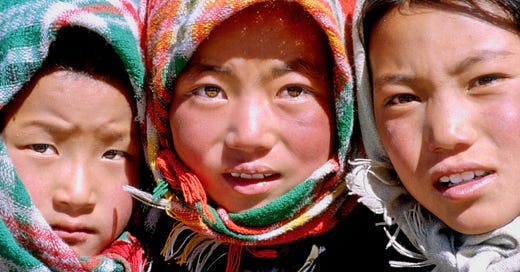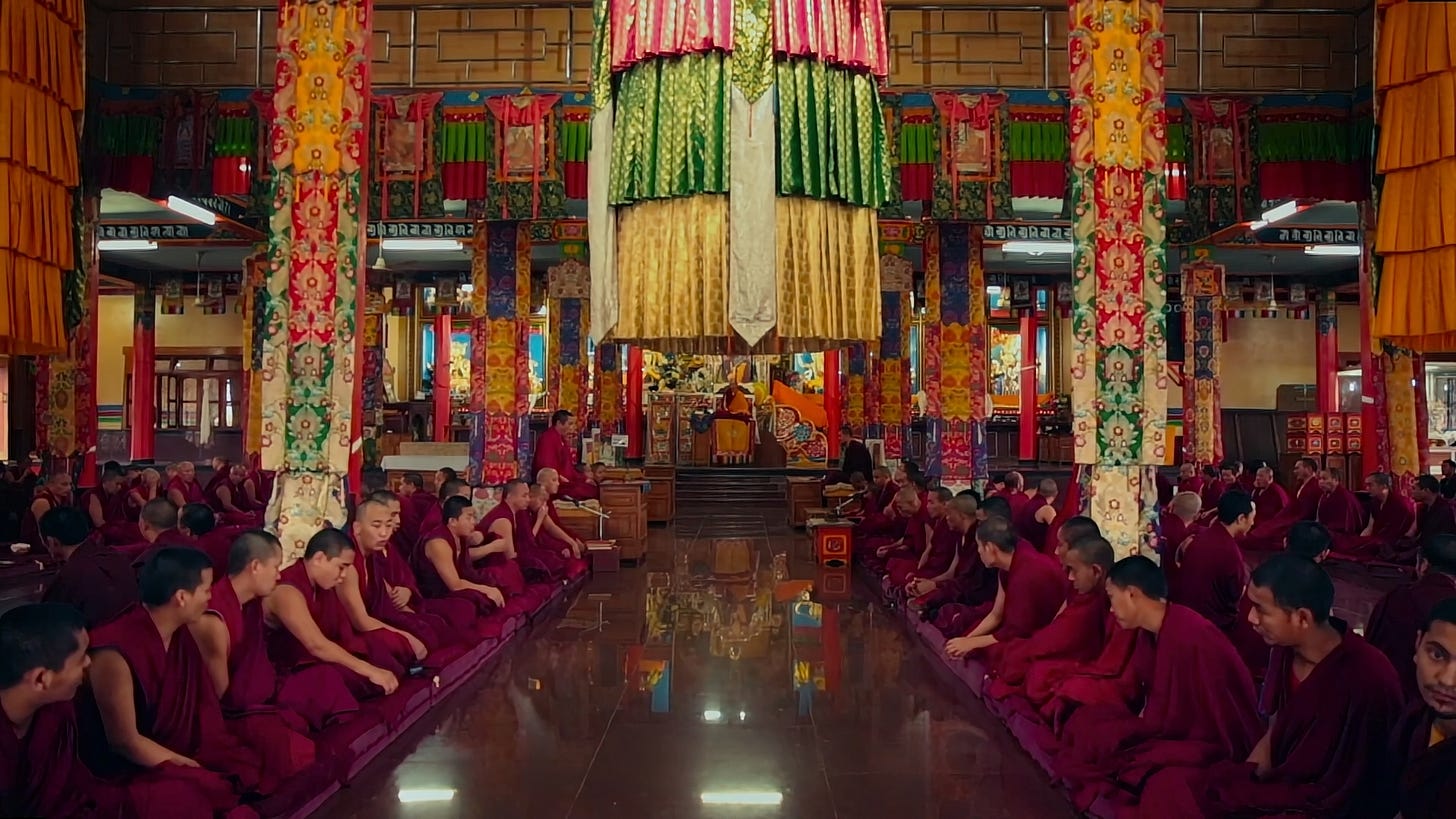Different Time, Different Place, Same Impact
The Chinese government has forced three-quarters of Tibetan children into boarding schools
Different time, different place, different government, but same impact in the sense of breaking cultural and familial bonds and roots, and psychologically damaging and traumatizing kids at their foundation.
The quotation is from Lhadon Tethong, a co-founder and director of the Tibet Action Institute. She is referring to the boarding schools the People’s Republic of China (PRC) is forcing roughly three-quarters of Tibetan children age six and older to attend, some rarely seeing their parents and families. She is also referring, by comparison, to the brutal damage done in Australia, Canada, and the United States to Indigenous cultures by similar forced placement of children in residential schools.
In an article yesterday with the headline…
> How China is Erasing Tibetan Culture, One Child at a Time
…The New York Times reported on its extensive interviews and research detailing the harm done to the children and the Tibetan culture. You can read the January 9 article without a paywall here.
It is only over the last ten years that I began to understand and appreciate Tibetan culture. The idea of a benevolent isolated theocracy with esoteric and complicated religious ceremonies, where as much as a quarter of the male population lived in monasteries, was a lot to take in (not to mention the steady diet of tsampa). Of course, I supported the Dalai Lama and the Tibetan people’s struggle against their Chinese occupiers. Still, the rest didn’t make sense until my Buddhist practice turned to Tibetan Vajrayana teachers and others with experience in that country.
Before the PRC occupied Tibet, forced the Dalai Lama and other spiritual leaders to flee, and began clamping down on the language and culture in the late 1950s, it may indeed have been a sort of Buddhist holy land. Or that’s how I perceive it now that I’ve listened to and read the accounts of ethnic Tibetans and researched the history.
There’s no clearer testament to the strength of the Tibetan culture than how it has been re-established in India, Nepal, and Bhutan. One vivid example is the decimation of the historic Ganden Monastery in Tibet and the exodus of its community of monks, followed by their recreation in Mundgod, India. That story is touchingly retold by the monks in the PBS documentary Ganden: A Joyful Land.
With a culture so strong, the Tibetan diaspora is likely to maintain many of its traditions for some generations to come. Outside of the homeland, however, traditions fade over time, and back in the homeland, the PRC is doing what it can to force Tibetans into its own culture. As is well known, the process of removing indigenous children from their homes to boarding schools had disastrous results in Australia, Canada, and the United States.
The practice:
Eroded languages and cultures.
Tore families apart and disrupted the transmission of parenting skills.
Led to child neglect and emotional, physical, and sexual abuse.
Resulted in higher rates of substance abuse, psychiatric illness, chronic pain, and other health conditions.
Many of these outcomes are already apparent in Tibet. According to the New York Times article, children are often unwilling or unable to speak Tibetan when they spend time with their families. They have been encouraged to speak only Mandarin.
Dozens of research papers and reports from experts and teachers within the Chinese system have warned about the anxiety, loneliness, depression, and other psychological harm of the schools on Tibetan children.
The Times also reported instances of beatings and, in regions, severe underfunding and understaffing of the boarding schools.
Meanwhile, as the Dalai Lama approaches his 90th birthday in six months, the PRC has held conferences and issued directives emphasizing its intention to oversee the selection of any successor. It’s widely believed that the Dalai Lama will likely make his statement on the succession to mark his birthday.
The Panchen Lama is considered the second most important spiritual leader of Tibet. After the 10th Panchen Lama died, the Dalai Lama in 1995 recognized Gedhun Choekyi Nyima as the 11th. He and his family were abducted three days later and have not been seen since.
The Dalai Lama has given few signals about his plans. Because he is considered the reincarnation of Avalokiteshvara, the bodhisattva of compassion, his decision will undoubtedly be designed to cause the least suffering for sentient beings.
From the Pure Land has thousands of readers and subscribers in 37 U.S. states and 18 countries, and the podcast has thousands of listeners in 54 countries.
The Buddha emphasized the joy of giving. Dana is not meant to be obligatory or done reluctantly. Instead, dana should be performed when the giver is “delighted before, during, and after giving.” —Gil Fronsdal.
Consider being delighted by paying for your subscription even though you’ll receive the same regular content as those with a free subscription. For $5 a month or $50 a year, you’ll contribute to Mel’s expenses and see parts of his book Slicing and Dicing Buddhism as it progresses.
Make a one-time gift to Mel of any amount using the Venmo QR code:
Share this post with a friend.
Listen and subscribe to the From the Pure Land podcasts via your favorite app or by clicking here.






